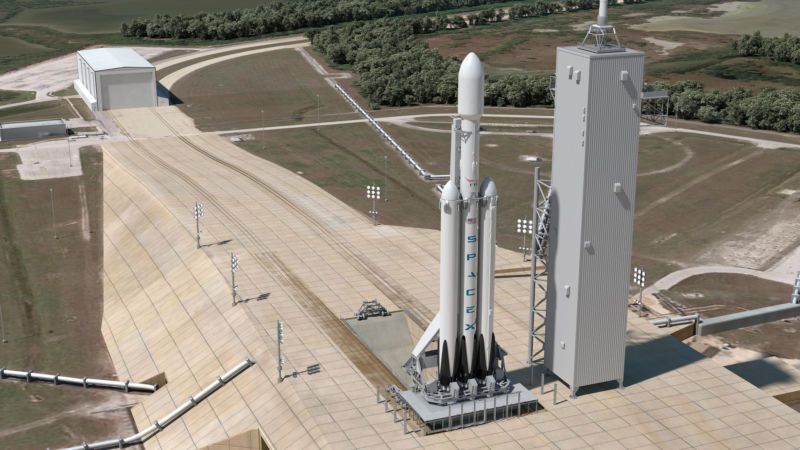SpaceX has tested the Falcon Heavy rocket central unit

Falcon Heavy, depicted by the artist on the site 39A Kennedy Space Center
Ilon Musk is gradually moving towards his goal - a controlled flight to Mars and the creation of a colony there. One of the intermediate stages is the development of the Falcon Heavy heavy launch vehicle. Work on this rocket has been going on for several years, and the other day SpaceX conducted fire tests of the central unit of its vehicle. More specifically, the central unit was tested earlier this month. The tests were deemed successful, so now the company starts the next stage - the design of the remaining elements.
As previously reported, the first stage of the Falcon Heavy consists of one central unit and two side accelerators. These accelerators are the modified first stages of the Falcon 9 launch vehicle. After launching the Falcon Heavy, Mask hopes to return all three stages to Earth for re-launch.
According to the initial plan, the preliminary fire tests of the Falcon Heavy should have been carried out earlier, but several technical problems arose. Ilon Mask explained all unforeseen circumstances. “Generally speaking, everything sounds simple, but in fact it doesn’t, everything is extremely difficult,” he said , referring to the design of the launch vehicle. The company had to modify the central unit and add a number of elements for the upcoming flight.
')
Ilon Mask himself assesses the flight of an already finished rocket as a high-risk mission. In order to save money, SpaceX will use the “proven flight” first steps of the Falcon 9. This project is often criticized, because technically the rocket is really very complicated. A successful flight will take place only if all 27 engines of all three stages work synchronously and without problems.
A similar project was attempted by Soviet engineers to create an accelerator for the H1 launch vehicle . But all four test launches of H1 (with the help of this rocket in the USSR they planned to send expeditions to the moon) were unsuccessful at the stage of the first stage. And in 1974, the Soviet manned lunar landing program was closed, after which, in 1976, the H-1 creation work was officially closed.
In SpaceX, despite all the difficulties, we are confident in the success of the project. The company is going to send the first tourists to the flight around the moon next year, after which it is planned to launch an automatic expedition to Mars in 2020. The success of both missions depends on the success of the development of Falcon Heavy.
Source: https://habr.com/ru/post/370451/
All Articles